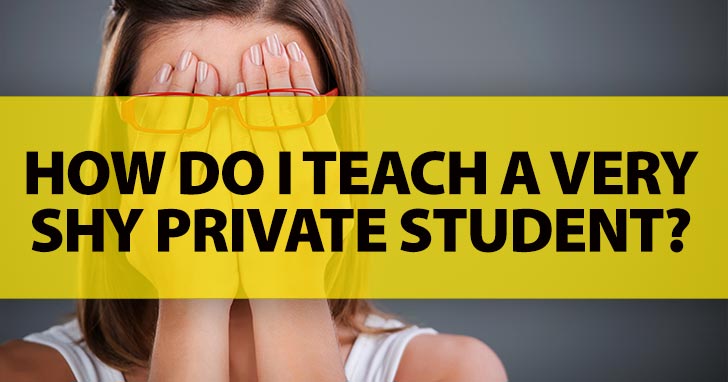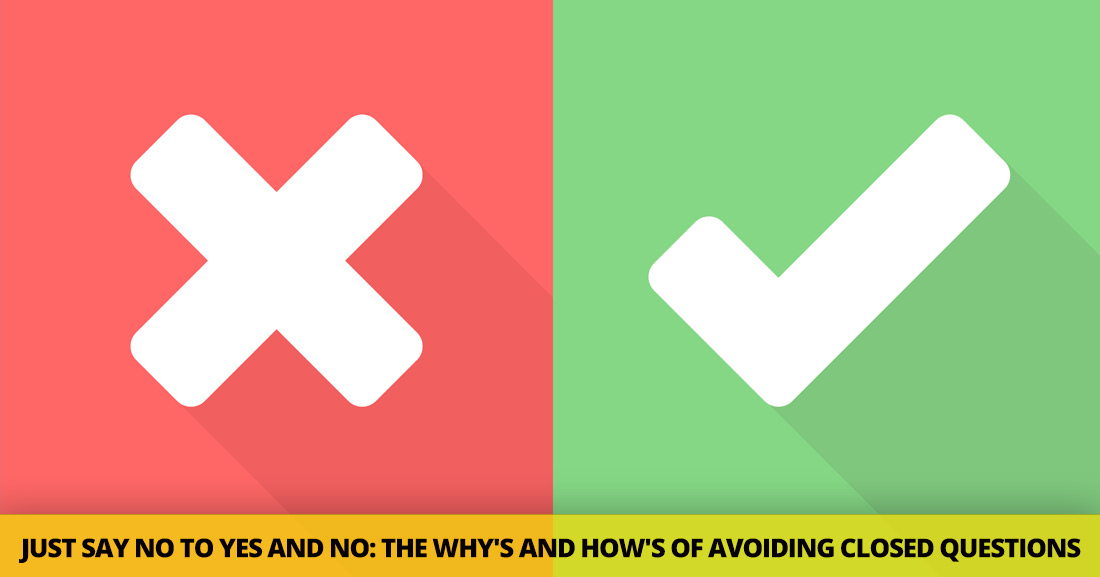ESL Teachers Ask: How Do I Teach a Very Shy Private Student?


And closed questions can be the bane of an ESL teacher’s existence. That’s because when we ask our students questions, we are generally trying to elicit spoken English from them. And we aren’t going to get a very good read of our students’ speaking skills when we get only a one word answer from them. That’s why it is so important to ask students open ended questions, questions that require more than just a yes or no. These types of questions get students talking, using English in creative ways and practicing their pronunciation and spoken grammar. But how does a teacher avoid closed questions and instead ask more open ended questions? Here are some tips on how to make it happen.
What’s wrong with closed questions? You might find them perfectly acceptable to use in your ESL class, and sometimes they are. But usually open ended questions are a better choice, and here’s why.
Closed questions naturally get a one word response. They are yes/no questions, and often that is all you will get for an answer. Since we want our ESL students to speak often in class, asking questions that require longer answers are a better choice when we are trying to get in some speaking practice.
You’ll learn more about what your students know and who they are with open ended questions. Open ended questions give students more room to share their personal thoughts and ideas. They allow more creative answers. They do not ask for simple facts (Is the sky blue?) but elicit information on less straightforward topics. (Are friends more or less important than family?)
Open-ended questions are great for eliciting certain language from students. That language might be certain vocabulary words or a specific grammatical construction. You can tailor your open ended questions to elicit a certain type of language, or you can simply see how much complex language students use on their own without a specific prompt designed to elicit it. When you do, you’ll have a better understanding of how much students are comfortable expressing on their own as opposed to how much language they simply understand and repeat when you use the target structure in your question.
Closed questions are short questions and usually only require one student to give an answer. Open ended questions go beyond that. They give many students a chance to share their ideas and contribute to the discussion in class. They also make room for different opinions among students, and there is no better way to get students to talk than to have them voice different opinions on the same subject. This way, more students participate in the discussion rather than just observing it.
So you’re convinced that open ended questions are generally more valuable than closed questions, but how does a teacher make sure they are asking the right questions in class? Here are some tips to make sure you are making the most of each question you ask.
Don’t ask questions that begin with “do.” Do questions are a dead giveaway for closed questions. Instead, ask questions that begin with the six question words: who, what, where, when, why, and how. They will naturally elicit more than a yes or no from your students whereas questions that begin with do, are, will, or have generally only require a one word reply.
Avoid asking students “Do you understand?” A yes in response to this question often means very little. Students may not understand the question and therefore cannot give you an accurate answer. Also, students may understand what you have told them but not be able to use the language structure themselves in which case you’ll still have to go over it again. Culture can come into play when a “no” might cause a student to lose face (or feel as if he has). Sometimes students will simply respond with a yes to any question you ask. So wipe the question Do you understand from your vocabulary, and you’ll be one step close to better responses from your students even if you do nothing else.
Avoid asking simple, factual questions. Even when they begin with who, what, where, when, why, or how, factual questions can often be answered with one word. Try instead to ask questions that have more than one correct response. These might still be factual, but if so they should be more general. What contributes to air pollution? rather than Do cars cause air pollution? Even better are questions that will include some degree of opinion in the answer. What are the best measures to prevent young people from smoking?
Try not asking a question at all. Instead, start your prompt with describe, talk about, or tell me about. These phrases will elicit a response from your students, but it will naturally be more than one word. If you still aren’t getting enough of a response from your students, ask them to give you more detail in their description.
If you have always thought all questions are created equal, the idea that open ended questions are more valuable than closed questions might be a tough one to understand and internalize. But when you start making a point of choosing open ended questions over their one word counterparts, you will see what a difference this little change can make in how much and how well your ESL students speak.